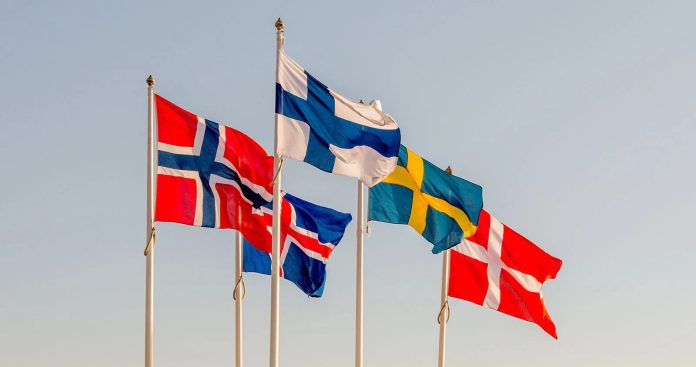Somali Magazine October 14, 2023-Investors from Ireland and Nordic countries have been encouraged to tap into Africa as a key investment destination, as the continent holds significant growth potential.
Prof. Kevin Chika Urama, the Chief Economist of the African Development Bank Group made the call when on an official visit to Denmark, Finland, Ireland, Norway, and Sweden.
Prof. Urama pointed out that Africa’s projected population boom, which could make it the world’s most populous region by the end of the century with up to 3.4 billion people, presents substantial business and investment opportunities for the rest of the world.
“With a population of more than 1.3 billion [currently], a youthful population of 600 million, rapid urbanization and rising incomes of the middle class, Africa is the leading emerging market frontier,” said Prof. Urama.
He was joined on the trip by Ms. Mette Knudsen, the Executive Director for the Nordic-Indian-Irish Constituency at the AfDB.
Prof Urama explained that Africa’s agriculture and energy sectors present the most significant trade and investment opportunities for Nordic countries. Africa’s food and agriculture market is projected to increase from $300 billion in 2022 to $1 trillion by 2030. This sector presents a growth potential of 233 percent.
Nordic countries’ diplomatic ties with Africa
Historically, Nordic investors have exhibited risk aversion toward Africa. Nevertheless, there are signs that this trend is evolving. For instance, bilateral trade between Norway and Africa surged from $3.1 billion in 2018 to $5.2 billion in 2022. This reflects a 68 percent increase.
However, Foreign Direct Investment (FDI) by Norway in Africa stood at $1.6 billion in 2021. This was a 12 percent decline from the FDIs reported in 2020. “Much needs to be done to improve trade and investment between Norway and Africa. Between 2018 and 2022, total exports to Africa from Norway represented on average only 0.4 per cent of Africa’s total imports,” Prof. Urama noted.
He said bilateral trade between Denmark and Africa increased by 28.6 per cent between 2018 and 2022. It surged from $2 billion to $2.6 billion and has enormous potential for further expansion.
“But this increase is insufficient in both value and relative terms. Between 2018 and 2022, total exports to Africa from Denmark represented on average only 0.3 per cent of Africa’s total global imports,” he said.
Denmark’s imports represent only 0.1 per cent of Africa’s total exports between 2018 and 2022. “This needs to change given the huge potential and opportunities that African markets offer to Danish businesses for trade and investment and the strong partnership between Denmark and African countries,” he said.
Sectors for Collaboration
During his visit, Prof. Urama called investors to seize investment opportunities in Africa. In particular, he singled out key areas such as green metals, such as lithium and cobalt, that will drive clean technologies globally.
“The continent holds 80 per cent of the world’s platinum; 50 per cent of cobalt and 40 per cent of magnesium, as well as vast deposits of lithium and graphite,” he said.
There are also untapped opportunities in the development of Special Agro-industrial Processing Zones. Africa possesses 65 per cent of the world’s uncultivated arable land. This offers significant potential for sustainable agriculture and agribusiness.
Prof. Urama noted that Ireland and the Nordic countries should leverage the African Continental Free Trade Area (AfCFTA), too. AfCTA is the world’s largest regional bloc regarding the number of countries, estimated at a market size of $3.5 trillion.
Given the significance of oceans to Nordic economies, the blue economy has emerged as an under-explored area. This is a segment where Norwegian and Nordic companies can contribute immensely to the African markets.
Africa’s Blue economy opportunities
With their experience and expertise, Nordic companies have an edge in steering the growth of the blue economy in Africa. Additionally, Norway, which runs on 97 percent hydropower, is in a great position to offer insightful knowledge on clean energy.
The AfDB estimates that Africa needs $60 to $90 billion annually to bridge the energy infrastructure gap. The energy supply gap has left over 600 million Africans without access to electricity.
Nordic countries are renowned for establishing some of the most egalitarian societies globally. African nations can draw valuable lessons on fostering equality. These European countries can also partake in the success of startups by addressing Africa’s critical human capital requirements.

